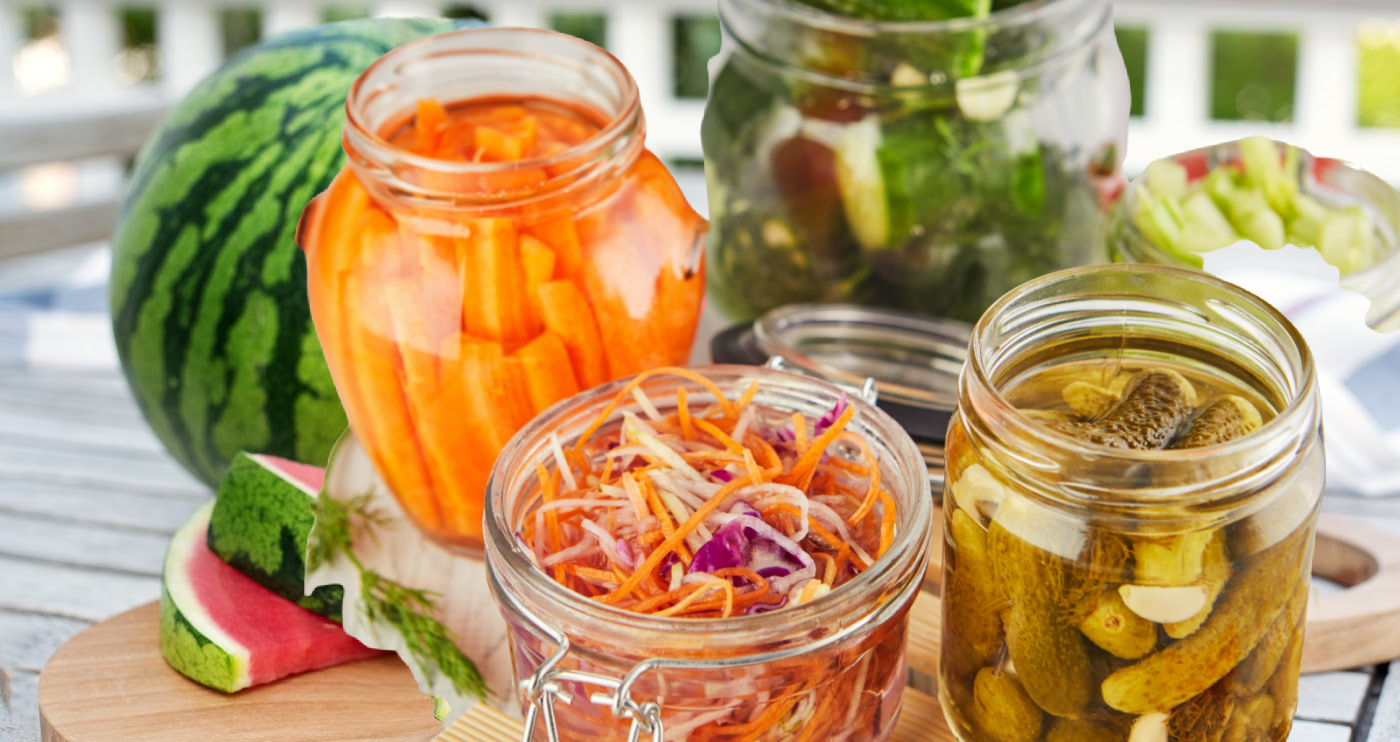
Probiotics are our natural allies. While humans evolved to get nutrition from certain foods, the microorganisms in our digestive tracts evolved right along with us. They help produce vitamins, break down macronutrients, and even have a beneficial impact on our moods, immune systems, and inflammation. By taking up space and food needed by pathogenic bacteria, they also help protect us against gastrointestinal illnesses.
If you follow an average American diet, though, it isn’t always easy to keep these tiny creatures healthy and in balance. If you take antibiotics, many of them may die. Probiotics can help seed your digestive tract with helpful bacteria, but probiotic supplements are expensive and often not as helpful as they claim. It’s much better to get fresh, live probiotics from the foods that you eat, which is a lot easier than it sounds. Here are seven easy ways to pack more probiotics into your meals:
1. Switch to fermented dairy products.
Fresh milk and cream don’t have a long shelf-life. Fermentation was the traditional way to preserve dairy, turning it into foods like cheese, yogurt, and sour cream. Unfortunately, not all dairy on the market still uses these traditional processes. A lot of sour cream brands on the market, for example, use cream, acidifying agents, and thickeners instead of fermentation.
If you love dairy, make sure that you’re purchasing products that are made with live and active cultures. They should specify the species of beneficial bacteria on their ingredient lists. Skip any that don’t say that their bacteria are live and active.
Can’t find fermented sour cream? Try swapping Greek yogurt in instead. Just mix a bit of lemon or lime juice with the yogurt to get the same tanginess.
2. Use raw vinegar.
Vinegar is traditionally a fermented food that’s chock-full of benefits. While the jury is still out on whether it’s a good source of probiotics, raw vinegars do offer beneficial bacteria and digestive benefits.
The trick with raw vinegar is to look for vinegars that contain the “mother.” This is a cloudy or stringy substance that consists of yeasts, beneficial bacteria, and micronutrients. You’ll most often see it collected at the bottom of bottles of vinegar.
Use raw vinegar the same way that you’d use any other vinegar. Combine it with heart-healthy oils (like olive or avocado), minced garlic, and herbs to make a homemade salad dressing.
3. Make your own kombucha.
Kombucha has gotten a lot of hype as a probiotic powerhouse, but bottles of the good stuff can be pretty pricey. Fortunately, it’s easy to make your own. All you need is some tea, sugar, and a kombucha starter culture. You can purchase a starter culture from health food stores or online, but you can probably also get some for free if you’re fortunate enough to know someone who makes their own kombucha. (It tends to multiply faster than you can use it!)
If you like, you can also allow your kombucha to over-ferment until it’s very sour. This makes a great substitute for vinegar or lemon juice in recipes.
4. Try water or milk kefir.
If kombucha isn’t your speed, you may want to try water kefir. This is a probiotic beverage made from a similar combination of beneficial bacteria and yeast. Instead of being a rubbery beige “pancake” like kombucha, kefir starter looks like loose, jelly-like granules.
Depending on whether you’re working with water or milk kefir, you’ll add these to either sugar water or milk. Allow it to ferment for a few days, strain out the starter grains, and enjoy!
5. Look for fermented pickles.
As with dairy, fermentation is a traditional method of preserving pickles. Not all brands of pickles are fermented, so you’ll have to pay attention to ingredient labels. Avoid pickles that have been pasteurized, as this will kill off the probiotic bacteria. Look for pickles that have “raw” and “barrel fermented” on the label. Snack on them as-is, add them to sauces, or use them to add crunch and tanginess to sandwiches.
6. Enjoy other fermented vegetables.
Sauerkraut is fermented cabbage, and traditionally accompanies German foods. It’s easy to find in your average grocery store, and almost as easy to make at home.
Kimchi is a Korean dish made of cabbage, radish, and other vegetables, mixed with salt and spices, and allowed to ferment. It’s a spicy, salty, slightly sweet dish with a strong flavor. It’s a little more complicated to make than sauerkraut, but very tasty and well worth the effort.
Both sauerkraut and kimchi can add a delicious, unexpected twist to traditional meals and snacks. Try them as a condiment on sandwiches, or an accompaniment to a main course.
7. Choose the right yogurt.
Yogurt is probably the first food most people think of when they hear the word “probiotic,” but not all yogurts are the same. Avoid brands that contain artificial flavors, extra sugar, coloring agents, or thickeners, and look for ones that offer a wide variety of different beneficial bacteria.
Eat yogurt either plain or with fruit or cereal. You can also use it to substitute for heavy cream or sour cream in other recipes. Avoid heating it too much, since this can kill off the probiotic microorganisms.
If you want to improve your gut health with probiotics, it’s as easy as choosing the right foods. Stick to fermented vegetables like traditional pickles, sauerkraut, or kimchi, fermented dairy, raw vinegar, and beverages like kombucha, water kefir, or milk kefir. Consume a variety of these as part of a high-fiber diet, and you’ll be on your way to healthy digestion.